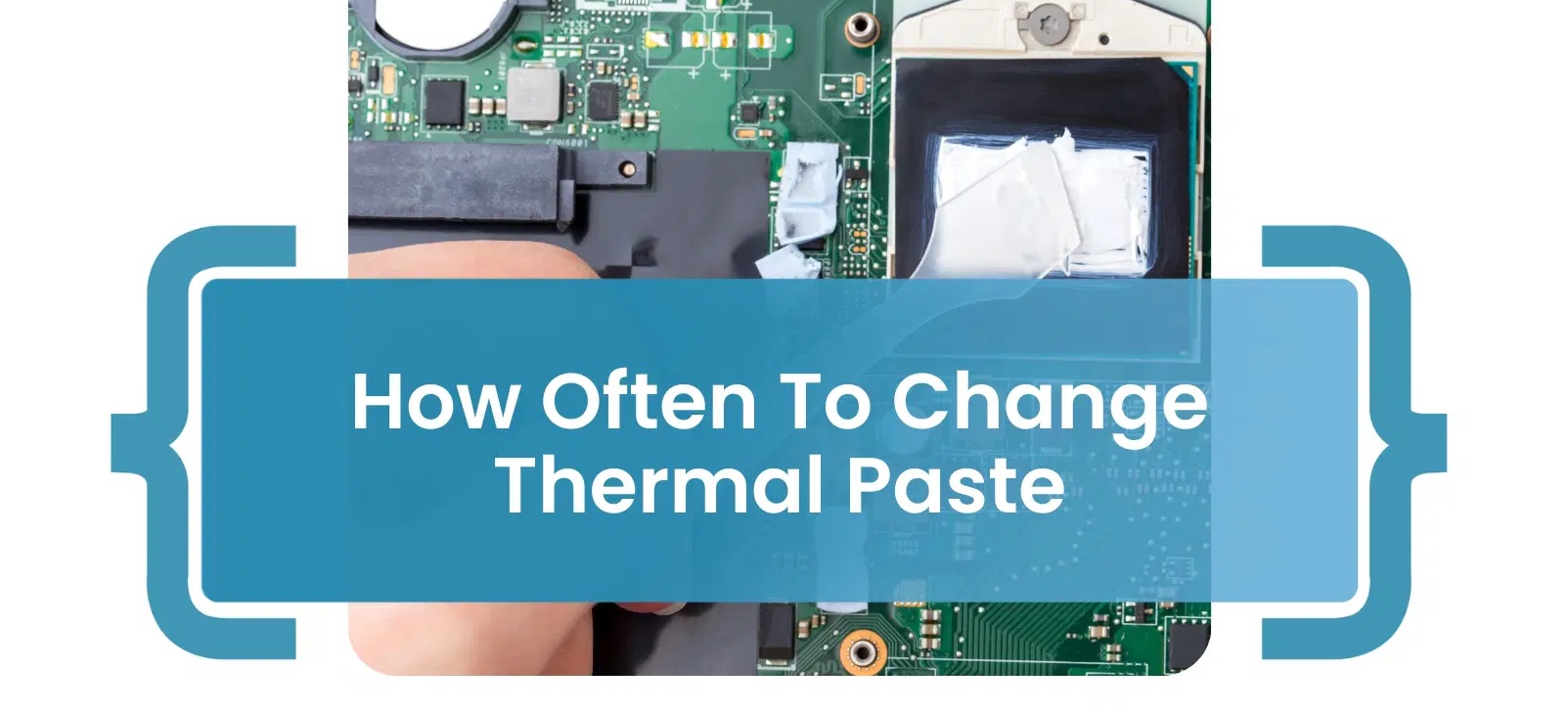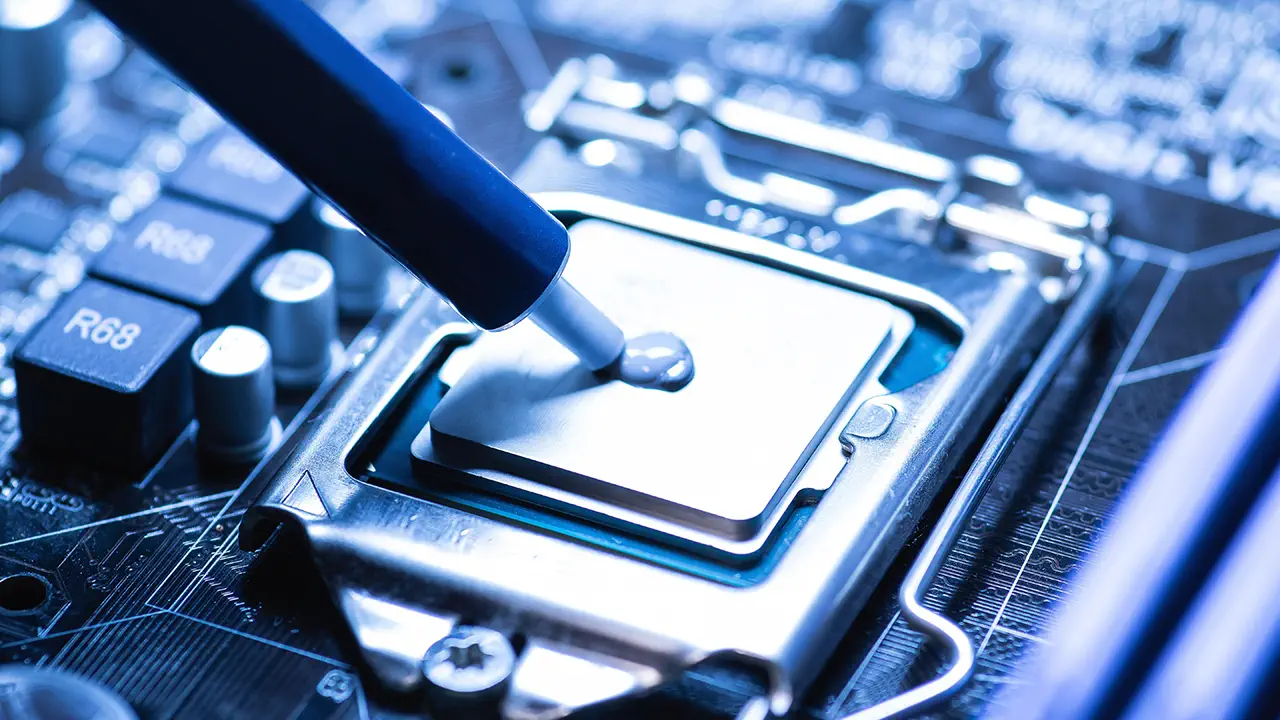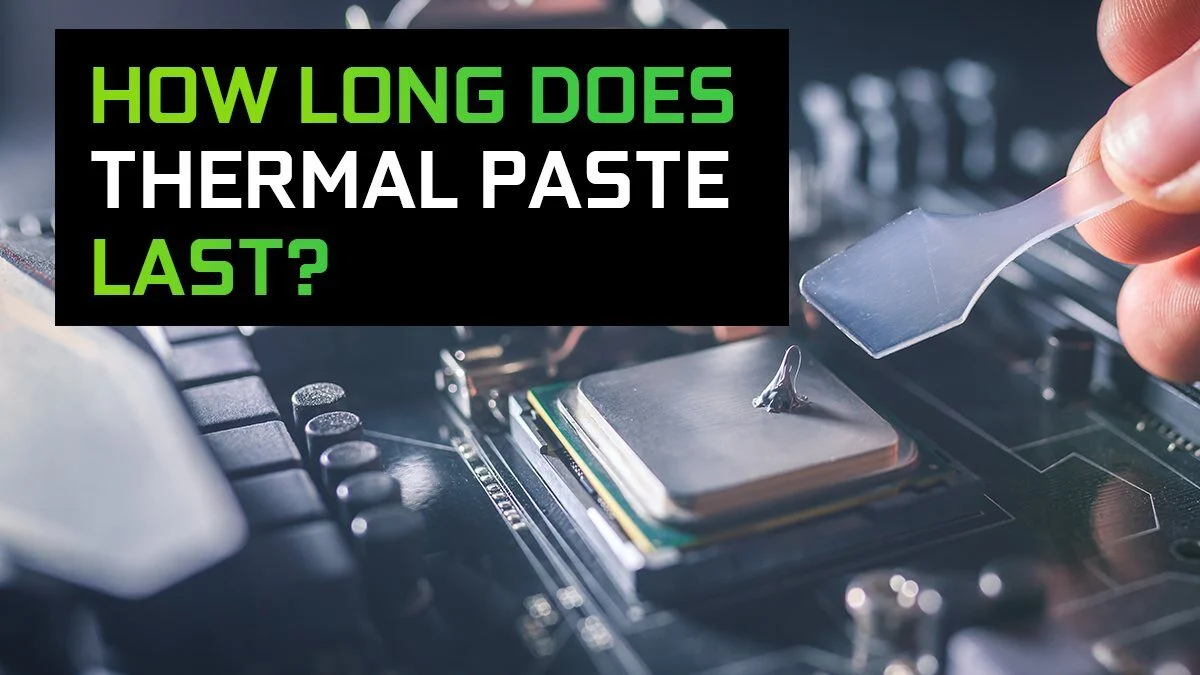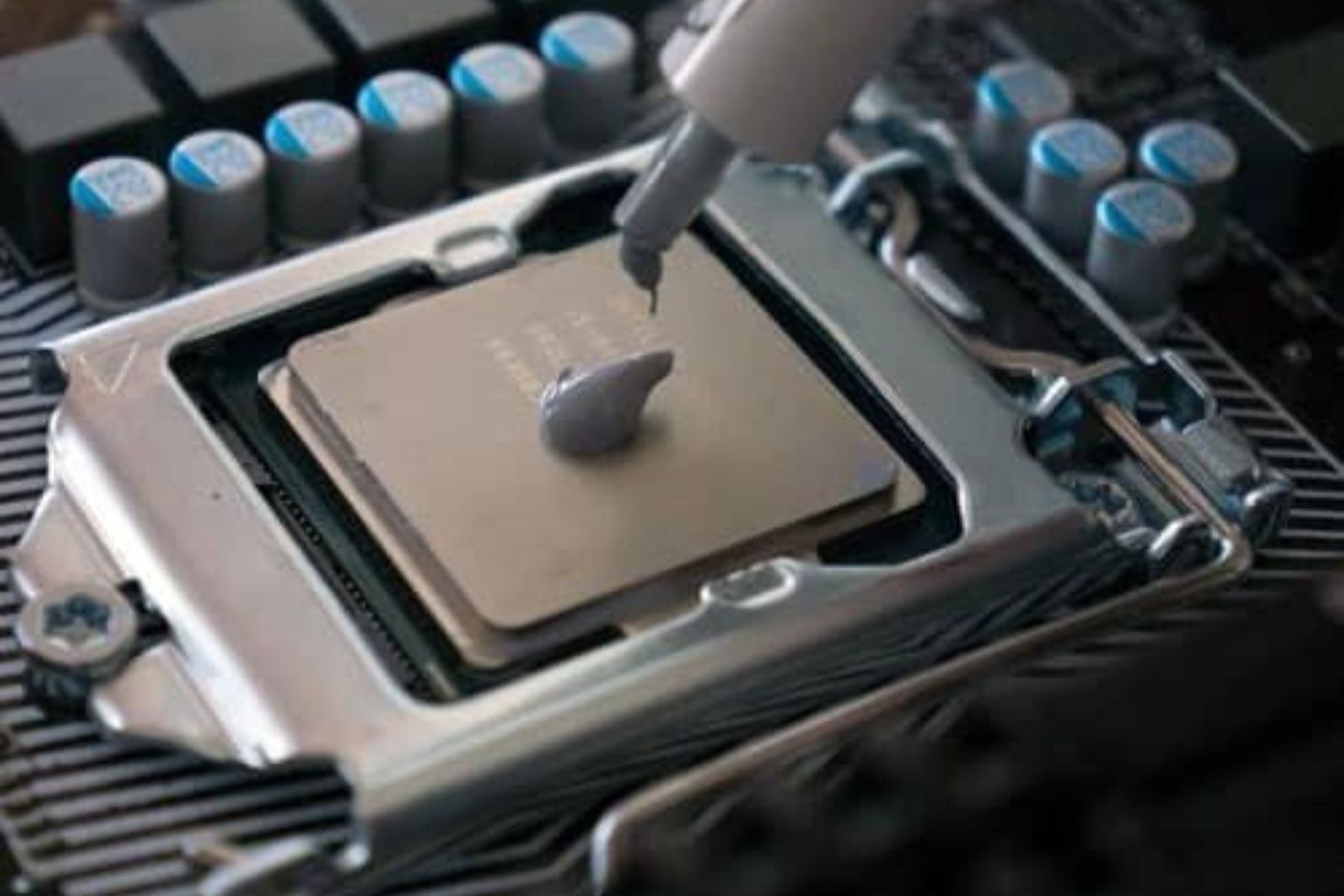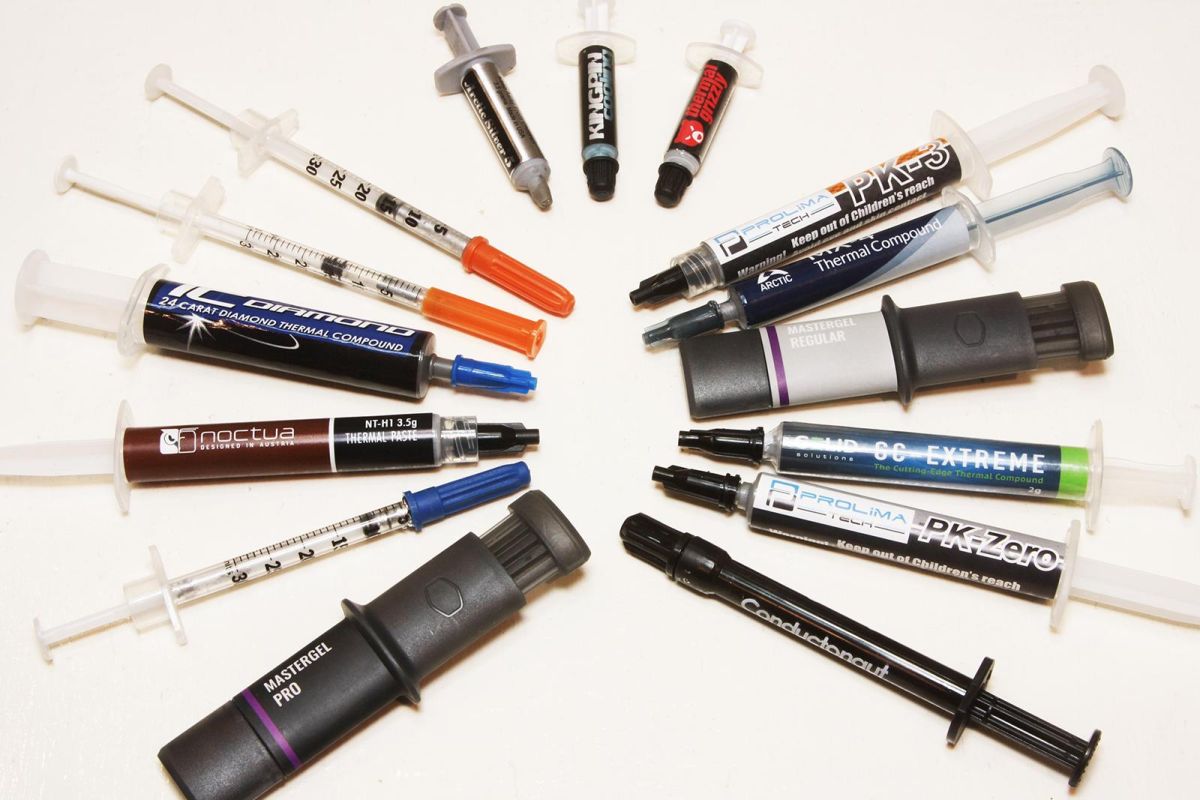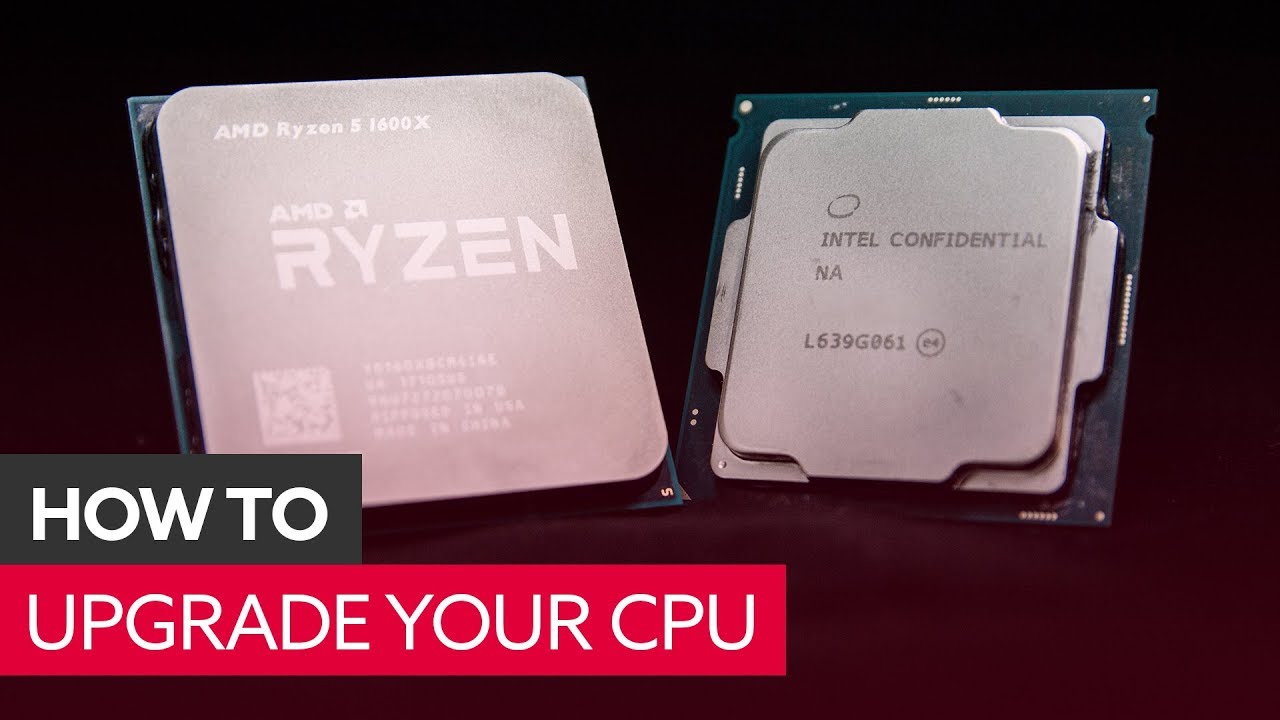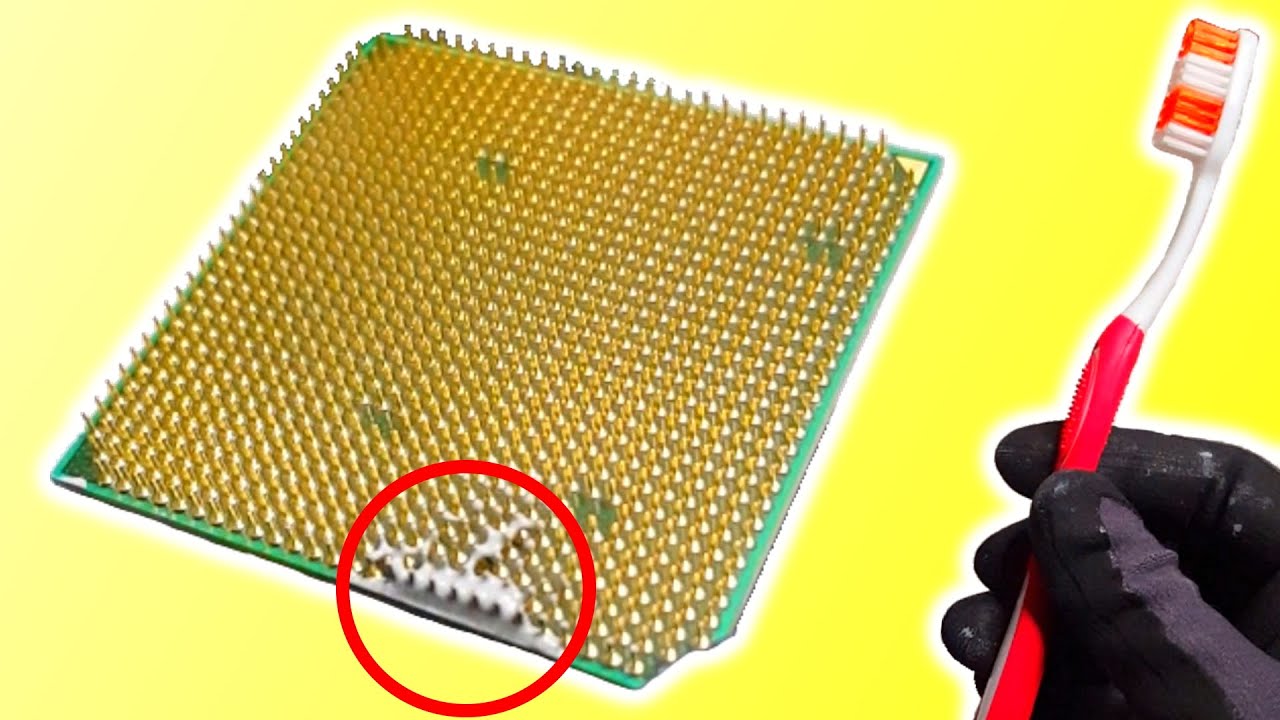Introduction
When it comes to keeping your computer running smoothly and efficiently, there are many factors to consider. One often overlooked aspect is the thermal paste on your CPU. Thermal paste, also known as thermal compound or thermal grease, plays a crucial role in promoting heat transfer between your CPU and its cooling system. Over time, the thermal paste can deteriorate, causing a decrease in its effectiveness in conducting heat.
Understanding the importance of thermal paste and knowing when to change it is vital for maintaining the optimal performance of your CPU. This article will delve into the topic of thermal paste, why it is important, and how often it should be changed.
Before we dive into the intricacies of thermal paste, let’s first define what it actually is. Thermal paste is a sticky substance that is applied between the CPU and the heat sink. Its primary function is to fill in any microscopic gaps and imperfections on the surfaces, ensuring improved thermal conductivity. By facilitating the transfer of heat from the CPU to the heat sink, thermal paste helps to prevent overheating and maintains the longevity of your processor.
So why is thermal paste important? Well, as your CPU operates, the electrical processes generate heat. Over time, this heat can build up and cause the CPU to overheat, which can lead to performance degradation or even permanent damage. To prevent this, the heat needs to be efficiently dissipated away from the CPU. This is where thermal paste comes in.
Thermal paste fills in the imperfections between the CPU and heat sink, creating a tighter bond and improving the efficiency of heat transfer. Without thermal paste, there would be air gaps between the CPU and heat sink, hindering the heat dissipation process. By effectively conducting heat away from the CPU, thermal paste helps to maintain stable temperatures and optimal performance.
Now that we understand the importance of thermal paste, let’s explore the signs that indicate it may be time to change it.
What is thermal paste?
Thermal paste, also known as thermal compound or thermal grease, is a crucial component in ensuring efficient heat transfer between a CPU and its cooling system. It is a sticky substance that is applied to the surface of the CPU before attaching the heat sink. The primary purpose of thermal paste is to fill in any microscopic gaps and imperfections on both surfaces, creating a seamless connection.
Thermal paste is typically made of a mixture of materials such as silicon, metal oxides, and ceramics. These materials have high thermal conductivity, which means they can effectively transfer heat. The paste functions to bridge the small gaps between the CPU and the heat sink, improving thermal conductivity and maximizing heat dissipation.
When a CPU operates, it generates heat due to the electrical processes happening inside. The heat needs to be efficiently transferred away from the CPU to prevent overheating. However, the surfaces of both the CPU and the heat sink are not perfectly smooth. There can be microscopic imperfections, such as pits, grooves, or air bubbles. These imperfections can create air gaps that hinder the transfer of heat.
Thermal paste acts as a medium to eliminate these gaps and promote better contact between the CPU and the heat sink. By filling in the microscopic irregularities, the paste ensures that there is maximum surface contact and facilitates the transfer of heat from the CPU to the heat sink. This helps to maintain lower temperatures, prevent overheating, and prolong the lifespan of the CPU.
It’s important to note that thermal paste is a consumable material, meaning that it will degrade over time. Factors such as high temperatures, continuous use, and the quality of the paste itself can impact its longevity. As thermal paste deteriorates, its performance in conducting heat diminishes.
Now that we understand what thermal paste is and its primary function, let’s discuss the signs that indicate it may be time to change the thermal paste.
Why is thermal paste important?
Thermal paste plays a crucial role in maintaining the optimal performance and longevity of your CPU. It is an integral component of the cooling system that helps to dissipate the heat generated by the CPU. Here are a few reasons why thermal paste is important:
1. Facilitates Heat Transfer: The primary function of thermal paste is to promote efficient heat transfer between the CPU and the heat sink. By filling in the microscopic gaps and imperfections on the surfaces, thermal paste ensures maximum contact between the two components. This enhances thermal conductivity, allowing the heat to be effectively transferred from the CPU to the heat sink.
2. Prevents Overheating: Over time, the CPU can generate significant heat during operation. Without proper heat dissipation, this heat can lead to overheating, which can cause performance degradation or even permanent damage. Thermal paste helps to mitigate this risk by optimizing heat transfer and maintaining lower CPU temperatures.
3. Increases CPU Lifespan: Heat is one of the biggest enemies of electronic components, including CPUs. Excessive heat can shorten the lifespan of a CPU and even result in failure. By ensuring efficient heat dissipation, thermal paste helps to extend the lifespan of the CPU by keeping temperatures within the recommended range.
4. Improves Performance: When a CPU operates at higher temperatures, it can experience thermal throttling, which reduces its performance in order to prevent overheating. By effectively cooling the CPU, thermal paste helps to avoid thermal throttling and allows the processor to run at its full potential. This can result in improved overall system performance.
5. Provides Stability: Temperature fluctuations can cause instability in a computer system, leading to crashes, freezes, and other performance issues. Thermal paste helps to stabilize the CPU temperature by facilitating efficient heat transfer. This can contribute to a more reliable and stable system operation.
Given the importance of thermal paste in maintaining optimal CPU performance and preventing heat-related issues, it is essential to keep an eye on the condition of the thermal paste and ensure that it is replaced when necessary. In the next section, we’ll explore the signs that indicate it’s time to change the thermal paste.
Signs that it’s time to change the thermal paste
While thermal paste does degrade over time, it is not necessary to change it frequently. However, there are certain signs that indicate it may be time to replace the thermal paste. Here are a few indicators to look out for:
1. High CPU Temperatures: If you notice that your CPU temperatures are consistently higher than usual, it could be a sign that the thermal paste has deteriorated. As the thermal compound degrades, its ability to conduct heat effectively diminishes, leading to increased temperatures. Monitoring your CPU temperatures using software utilities can help you identify any significant changes.
2. Increased Fan Noise: When the thermal paste becomes less effective, your CPU cooling system may have to work harder to dissipate heat. This can result in increased fan speed and noise as the cooling system attempts to compensate for the reduced heat transfer. If you notice a sudden increase in fan noise, it may be worth considering replacing the thermal paste.
3. System Instability: Inadequate heat dissipation due to degraded thermal paste can lead to system instability. If your computer experiences frequent crashes, freezes, or unexpected shutdowns, it could be a result of the CPU overheating. Checking the thermal paste is a good step to take if you encounter such issues.
4. Visible Deterioration: Over time, thermal paste can dry out or become discolored. If you open your computer and inspect the thermal paste, you may notice that it has become hardened, dried, or even crusty. These visible signs of deterioration indicate that the thermal paste is no longer functioning optimally and should be replaced.
5. Maintenance or Upgrade: If you are performing routine maintenance on your computer or upgrading your CPU or cooling system, it is a good practice to replace the thermal paste. This ensures that you have fresh thermal paste in place for optimal heat transfer.
It’s important to note that the frequency of thermal paste replacement will vary depending on various factors, such as temperature conditions, CPU usage, and the quality of the thermal paste itself. In the following section, we will discuss the factors you should consider when deciding how often to change the thermal paste.
How often should you change thermal paste?
The frequency of thermal paste replacement depends on several factors, including the quality of the thermal paste, the operating temperature of the CPU, and the specific usage of your computer. While there is no set timeframe for changing thermal paste, there are general guidelines that can help you determine when to replace it.
As a general rule of thumb, it is recommended to replace thermal paste every 2 to 5 years. This timeframe takes into account the average lifespan of thermal paste and allows for any degradation or drying out that may occur over time. However, it’s important to note that this is just a guideline, and you may need to adjust the timeframe based on your specific circumstances.
If you are a heavy computer user, such as a gamer or content creator, your CPU may operate at higher temperatures for extended periods. In such cases, more frequent thermal paste replacements, such as every 1 to 2 years, may be advisable to ensure optimal heat transfer and system performance.
Additionally, if you notice any signs of thermal paste deterioration, such as increased CPU temperatures or system instability, it may be necessary to change the thermal paste earlier than the recommended timeframes. These signs indicate that the thermal paste is no longer effectively conducting heat, and replacing it can help prevent further issues.
The quality of the thermal paste you use also plays a role in its longevity. High-quality thermal pastes tend to have better heat conductive properties and can last longer compared to lower-quality ones. It’s worth investing in a reputable brand and checking for user reviews to ensure you are using a reliable thermal paste.
Ultimately, the decision to change thermal paste should be based on a combination of factors, including the age of the paste, the operating temperature of your CPU, and any visible signs of deterioration. Regular monitoring of your CPU temperatures and system performance can help you identify any issues and determine when it is time for a thermal paste replacement.
In the next section, we will discuss some best practices for changing thermal paste to ensure a proper and effective application.
Factors to consider when deciding how often to change thermal paste
While there are general guidelines for how often thermal paste should be replaced, it’s important to take into account several factors that can influence the lifespan and effectiveness of the thermal paste. Considering these factors will help you make a more informed decision on when to change the thermal paste. Here are some key factors to consider:
1. CPU Usage: The usage intensity of your CPU plays a significant role in determining how often you should change the thermal paste. If you use your computer for resource-intensive tasks like gaming, video editing, or running demanding software, your CPU will generate more heat. This increased heat generation may cause the thermal paste to degrade faster, requiring more frequent replacements.
2. Ambient Temperature: The ambient temperature in which your computer operates can affect the performance of the thermal paste. If you live in a hot and humid climate or your computer is exposed to high temperatures, the thermal paste may deteriorate more quickly. In such cases, it may be necessary to change the thermal paste more frequently to maintain optimal heat transfer.
3. Quality of Thermal Paste: The quality of the thermal paste itself can also impact its lifespan. Higher quality thermal pastes usually have better thermal conductivity and longevity compared to lower quality options. Investing in a reputable brand and choosing a high-quality thermal paste can result in a longer-lasting application.
4. Cleaning and Reapplication: When applying thermal paste, it’s crucial to clean the CPU and heat sink surfaces properly before reapplying. Failing to remove old thermal paste residue can affect the efficiency of the new application. If you are reapplying thermal paste, it may be a good opportunity to consider replacing it entirely, especially if it has been a while since the last replacement.
5. Manufacturer Recommendations: It’s worth checking the specific recommendations from your CPU manufacturer or consulting the user manual to see if they provide any guidance on how often to change the thermal paste. Some manufacturers may have specific recommendations based on the design and architecture of their CPUs.
6. Regular Monitoring: Monitoring your CPU temperatures and system performance on a regular basis can help you identify any signs of thermal paste degradation. By keeping an eye on these metrics, you can determine if a thermal paste replacement is necessary based on any significant increases in temperatures or performance issues.
Considering these factors will help you determine how often you should change the thermal paste in your CPU. However, it’s important to remember that these are general guidelines, and your specific circumstances may require adjustments to the replacement timeframe. In the next section, we will discuss some best practices for changing thermal paste to ensure a proper application.
Best practices for changing thermal paste
Changing thermal paste requires careful handling and precise application to ensure optimal heat transfer and system performance. Follow these best practices to ensure a successful thermal paste replacement:
1. Gather the necessary tools: Before getting started, gather the necessary tools, including rubbing alcohol or thermal paste cleaner, lint-free cloths or cotton swabs, and the new thermal paste. Having these tools readily available will make the process smoother.
2. Power off and disconnect: Before opening your computer, make sure to power off the system and unplug it from the power source. This will prevent any potential electrical damage and ensure your safety during the process.
3. Clean the surfaces: Carefully clean the CPU and the heat sink surfaces to remove any existing thermal paste residue. Use rubbing alcohol or a thermal paste cleaner along with lint-free cloths or cotton swabs to gently wipe away the old paste. Ensure that both surfaces are completely clean and free from any debris or residue.
4. Apply the new thermal paste: Apply a small amount of thermal paste onto the center of the CPU. The size of a pea or a rice grain is generally sufficient. Avoid applying too much paste, as it can lead to excess squeezing out and potentially interfering with other components. Then, gently place the heat sink onto the CPU, ensuring even pressure is applied for proper contact and distribution of the thermal paste.
5. Secure the heat sink: Once the heat sink is in place, secure it tightly according to the manufacturer’s instructions. Use the recommended fastening method, such as screws or clips, to ensure a secure and stable connection between the CPU and the heat sink.
6. Check for coverage: After securing the heat sink, inspect the thermal paste spread between the CPU and heat sink. It should create a thin and uniform layer without any visible gaps or excess paste. If needed, gently adjust the heat sink to ensure proper coverage and contact.
7. Reassemble and power on: Once you have confirmed the proper application of the thermal paste, reassemble your computer by reconnecting any cables or components that were disconnected. Finally, power on your system and monitor the CPU temperatures to ensure that the new thermal paste is effectively dissipating heat.
By following these best practices, you can ensure a successful and efficient thermal paste replacement. Remember to exercise caution and take your time during the process to avoid any damage or misapplication. Regularly monitoring your CPU temperatures after the replacement can help you confirm that the new thermal paste is functioning as intended.
Conclusion
Thermal paste is a critical component in maintaining the optimal performance and temperature of your CPU. By facilitating heat transfer between the CPU and the heat sink, thermal paste helps to prevent overheating, improve system stability, and prolong the lifespan of your processor.
While there is no set timeframe for changing thermal paste, it is recommended to replace it every 2 to 5 years. However, factors such as CPU usage, ambient temperature, and thermal paste quality can influence the lifespan and effectiveness of the thermal paste. Regular monitoring of CPU temperatures and system performance can help you identify any signs of thermal paste degradation and determine when it’s time for a replacement.
When changing thermal paste, it is essential to follow best practices to ensure a successful application. This includes cleaning the surfaces thoroughly, applying an appropriate amount of thermal paste, and securely fastening the heat sink. By adhering to these best practices, you can optimize heat transfer and maintain the efficiency of your CPU cooling system.
Remember, thermal paste is just one aspect of proper CPU cooling. Keeping your computer clean, ensuring proper airflow, and regularly maintaining your cooling system are also important for optimal performance and longevity.
By understanding the significance of thermal paste and knowing when and how to change it, you can ensure that your CPU remains cool, stable, and efficient for years to come.







